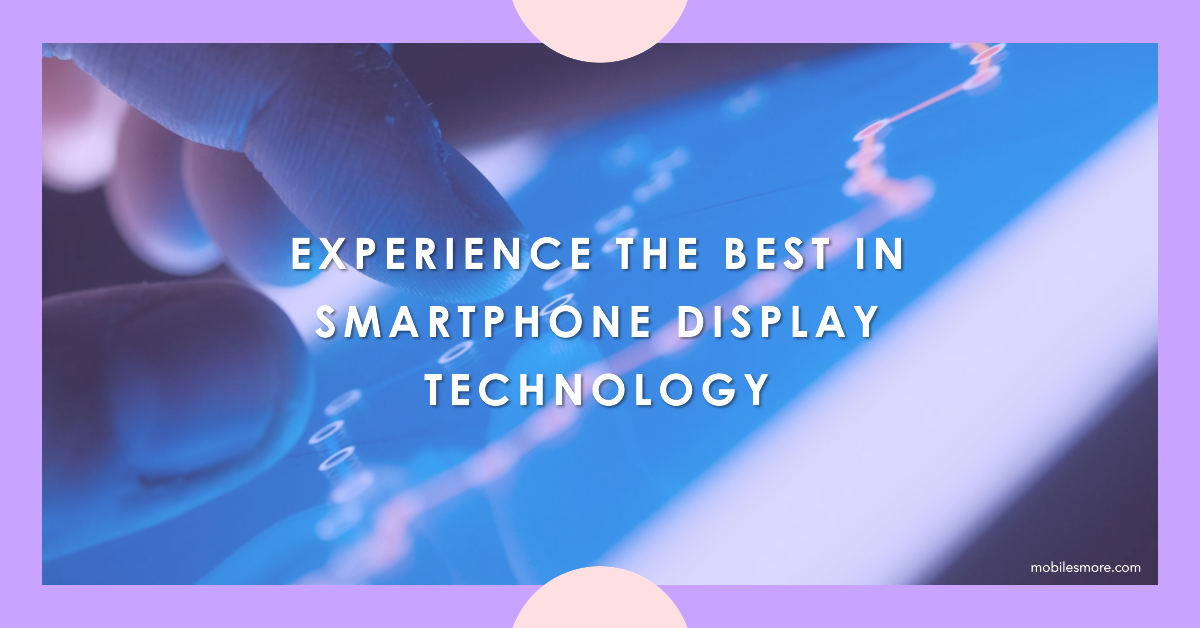In our fast-paced, digital world, smartphones have become an extension of ourselves. We use them to communicate, capture memories, play games, and binge-watch our favorite shows. The immersive experience we have with our smartphones is heavily influenced by the quality of their displays. In this blog post, we’ll explore three significant smartphone display technologies that have transformed our mobile visual experiences: High Dynamic Range (HDR), Retina display, and Super AMOLED.
High Dynamic Range (HDR): Elevating Visual Excellence
Imagine a display that can replicate colors, contrast, and brightness that closely mirror what our eyes perceive in the real world. That’s precisely what High Dynamic Range (HDR) does. HDR is a technology that’s gained prominence in both the world of smartphones and television screens.
Key Features of HDR:
- Enhanced Contrast: HDR displays offer a significantly broader range of contrast between the darkest blacks and the brightest whites, resulting in an image that’s closer to reality.
- Rich Colors: With a more extensive color palette and improved color accuracy, HDR displays create images that are vivid and lifelike.
- Increased Brightness: These displays can achieve higher levels of brightness, which is particularly beneficial when viewing content in well-lit environments.
- Improved Detail: HDR enhances the level of detail in both highlights and shadows, providing a more immersive and nuanced viewing experience.
- Better Viewing in Various Environments: Whether you’re watching a video in bright daylight or a dark room, HDR adapts to the lighting conditions to ensure the best viewing experience.
Benefits of HDR on Smartphones:
HDR technology has had a profound impact on smartphone displays, enhancing the quality of content consumption and mobile gaming. It’s not just about watching videos in cinematic quality; HDR improves the overall user experience by delivering crisper text, richer images, and more detailed graphics in games.
Retina Display: The Apple Innovation
When Apple introduced the term “Retina display,” it set a new benchmark for screen clarity and sharpness. While not a specific display technology like OLED or LCD, Retina is a term coined by Apple to describe screens that have pixel densities so high that individual pixels are virtually indistinguishable to the human eye.
Key Features of Retina Display:
- Pixel Density: Retina displays have incredibly high pixel densities, typically over 300 pixels per inch (PPI). This results in exceptionally sharp and clear images.
- Color Accuracy: These displays are known for their excellent color accuracy and consistency, ensuring that images and text appear true to life.
- Reduced Pixelation: The high pixel density prevents the “screen-door effect,” where you can see gaps between pixels, which can be distracting and reduce clarity.
Benefits of Retina Display:
Apple’s Retina displays have set a standard for screen quality. They offer incredibly sharp text, vibrant colors, and a smooth viewing experience. For tasks like reading, web browsing, and photo viewing, Retina displays provide a crispness that’s hard to beat. They also reduce eye strain when compared to lower-resolution screens.
Super AMOLED: Vibrant and Power-Efficient
Super AMOLED is a display technology developed by Samsung. It’s an advanced form of OLED (Organic Light Emitting Diode) technology that has made its way into many Samsung smartphones and other devices. What sets Super AMOLED apart is its ability to provide stunning visuals while remaining power-efficient.
Key Features of Super AMOLED:
- Vivid Colors: Super AMOLED displays are known for their deep blacks and vibrant colors. Each pixel emits its light, which means they can be individually turned on and off, resulting in true black levels.
- Thin and Flexible: Super AMOLED screens are thinner and more flexible than traditional LCD screens, allowing for sleeker device designs.
- Power Efficiency: Thanks to the ability to control individual pixels, Super AMOLED displays are more power-efficient. In situations where a portion of the screen needs to display information while the rest remains off (e.g., always-on displays), Super AMOLED excels in preserving battery life.
- Wide Viewing Angles: Super AMOLED displays maintain image quality even when viewed from extreme angles, making it easier to share content with others.
Benefits of Super AMOLED Displays:
Super AMOLED technology has given rise to smartphones with stunning, high-contrast screens. Whether you’re watching videos, playing games, or simply browsing the web, Super AMOLED displays offer a visually pleasing experience. They are particularly popular in devices designed for virtual reality (VR) experiences due to their high refresh rates and deep blacks.
Conclusion: The Evolution Continues
The world of smartphone display technologies is continually evolving. Innovations like HDR, Retina, and Super AMOLED have brought us displays that are not only visually stunning but also more power-efficient. As we continue to demand better visual experiences from our smartphones, it’s certain that the march of progress will persist, giving us displays that are even more lifelike, efficient, and breathtaking.
In the end, it’s not just about the technology, but how these displays enhance our daily lives. Whether you’re streaming your favorite show, reading a book, or simply admiring the beauty of a well-captured photograph, these display technologies have made those moments richer, sharper, and more immersive. As consumers, we can look forward to even more exciting developments in smartphone displays in the years to come, each bringing us closer to a world of visual perfection.

